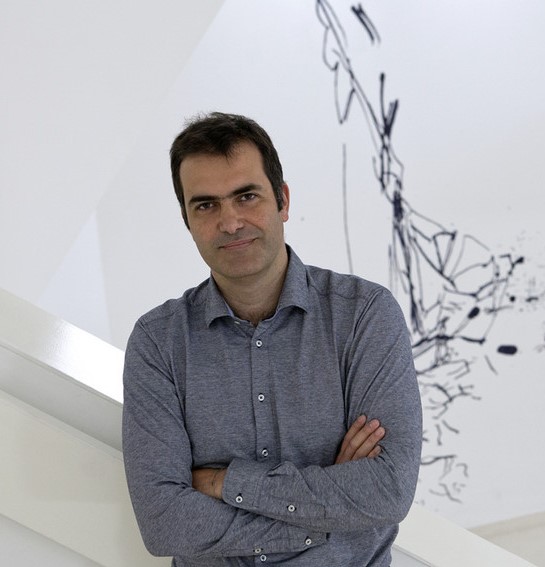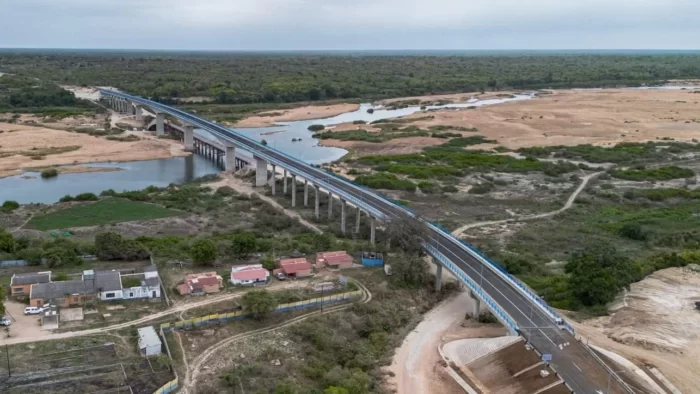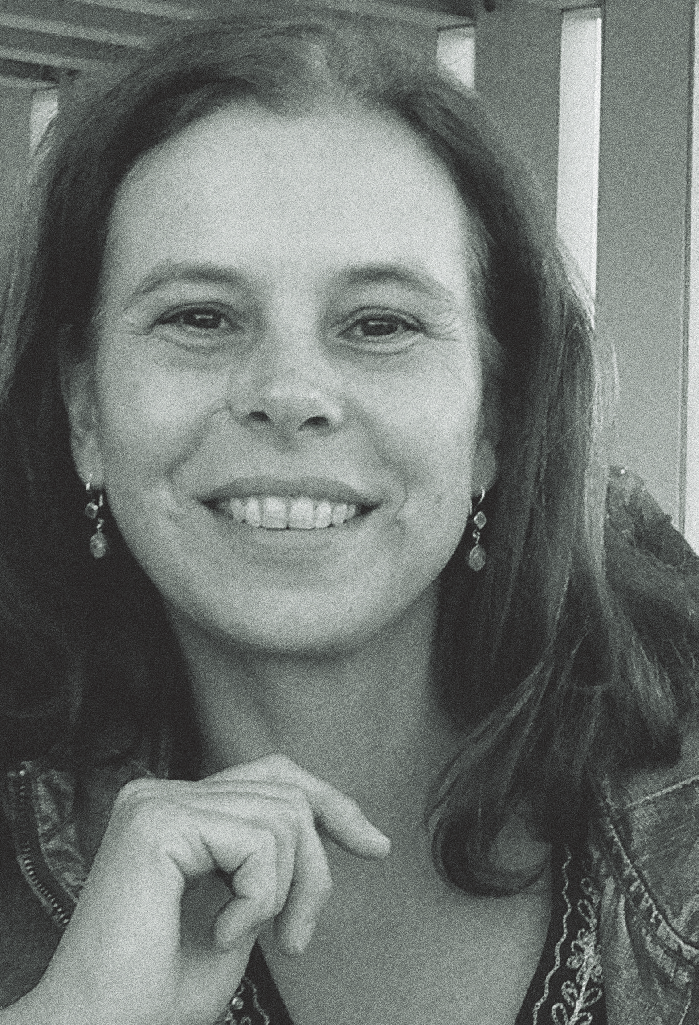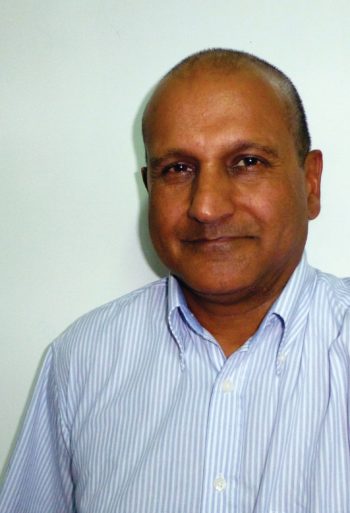A conversation with Arch. Pedro Campos Costa

A conversation with Arch. Pedro Campos Costa
'It is important to create synergies to see if we can live here in this rectangle. That’s the message I want to send at the Venice Biennale: there’s a lot to do here inside!’
Before founding Campos Costa Arquitectos in 2007, you’ve worked at UN Studio – Van Berkel e Bos, in Amsterdam, and with Promontório Arquitectos, in Lisbon. What memories do you have of those times?
I have great ones, they are part of my memories and my training as an architect. They are two completely different workshops, with very interesting working methods. I learned essentially methodologies, forms of organization and processes, which are often not given due value. We think that what matters is the design but, more than the form, the intelligence of the process is very important. Interestingly, nowadays I have a very different methodology from the one of those two workshops, but I am aware that the experience of having gone through other processes helped me to find mine.
Sustainability is a major concern of the studio. Can you tell us about the concept you’ve implemented at Campos Costa Arquitectos?
Architects were “pushed” to be a kind of consultants, where they choose materials, details and solutions through catalogs. At a certain point, the industry started to want to sell standard products and “killed” the architect’s idea as added value. We started to be suffocated with regulations and bureaucracies. The studio was born out of the ambition to seek tailor-made solutions, regardless of scale. The goal is to respond to each challenge in a personalized way. The extension of the Lisbon Oceanarium, CaCo or Casa não Casa are attempts to do this: create value with industry, through poor materials or technology or even more cultural aspects. We cannot stop adding value. I think that architecture has an obligation to create and transform reality into the future. I don’t understand architects who defend specialization or refuse the artistic component of the profession. Architects work with intuitions and sensibilities, they chose not to be mere service providers. To deny art in architecture is to deny ourselves.
Edifício do Mar received the 40 Under 40, A.Prize Exposinergy and a mention of the Valmor Prize. How important are these recognitions?
In the fog, receiving a pat on the back gives a feeling of comfort. It does not indicate the path, does not avoid obstacles, nor does it influence the path that has been drawn or that will be drawn. In the professional career of architecture, the best prize you can receive is a client or a user praising the work. Like the director of Oceanário who, a few weeks ago, told me that he is very satisfied with the building, that practically does not consume energy, as I had predicted. Hearing this confirmation is a huge satisfaction. Seeing a customer happy with what you do, that’s a huge reward.
You are a member of the editorial staff of Jornal Arquitectos and teach at the Universidade Autónoma of Lisbon. Do these projects complement your activity as an architect?
It is a pleasure and an honor to be part of the JA newsroom, it is an extremely exciting, innovative and competent group. I was very honored when they invited me. It is an excellent recognition by other fellow architects. Teaching is an atypical experience, I build my career in practice, I have made theoretical speculations, some considerations in newspapers or magazines but never in the academic field. Perhaps that is why I’ve organized several workshops at UAL. They are a good tool for accelerating the design process and relating to reality. The latter is called INSITU and is a laboratory where students build, in situations of spontaneous or clandestine urbanization, so that they can contact with real situations, and can build and feel the materials.
You are Commissioner of Portuguese representation at the Venice Biennale. How did this challenge arise? And how is the event going, despite budgetary constraints?
I was invited by DGARTES, and from the first minute I realized that it would be a huge challenge, not only because of the available budget, but also because of the originality of the challenge launched by the general curator, the arch. Rem Koolhas, who wanted to talk about architecture and not about architects. The model is different this year, forcing countries to do more research, in addition to having gone from 3 to 6 months in duration for the exhibition. The funding is half of the last edition. No one, in their right mind, thinks the money is enough. But I was more concerned with creating synergies and capitalizing on what little we had, and we’ve managed to have more than 90 people working on this project: researchers, Universities, City Halls, invited architects, in addition to the production of the Lisbon Architecture Triennale and the organization, the DGARTES. I was impressed with the dynamics between the municipalities and the teams, a participation that I hope will bear fruit. We did not calculate the money we actually raised yet, and above all how much the involvement of these 90 people is worth. In the end we will do the math, but I would venture to say that what we have already created, in added value, represents double the money we’ve received.
The Portuguese representation will not have a pavilion. It was decided to distribute newspapers… Tell us a little about this project.
This year, Portugal will distribute newspapers in a space provided by the Bienal at Arsenal, at the beginning of the countries, which is an exceptional location, and which was only possible because of the kindness of the organization and because they liked the project. I involved 6 cities, and a team of 6 architects and 6 architects editors who wrote, for the newspaper, news about these projects. We made 165 thousand copies, which is very close to the number of visitors last year. It is very ambitious. With the money we have, having this scope is fantastic. The organization of the Venice Biennale has already congratulated us on the project and we have received very positive comments for the idea.
How do you see the architecture that is being done in Portugal, nowadays?
We are fortunate to have two Pritzkers, several international awards from different generations, immense publications in international magazines that allow us to have prestige abroad. However, despite this, we have immense difficulties in internationalizing: many internal weaknesses, little organization, a low average quality, without work within the country, without a cooperative or business logic. Without internal energy, internationalization is synonymous of the emigration of professionals. It would be important to create synergies, structures and to manage better, to see if we can live here in the rectangle more continuously. This is a bit of the message I wanted to send in the Venice Biennale: there is a lot to do inside, please come back! Without density and without critical mass, we have no chance.
This interview is part of Revista Artes & Letras # 55, from July / August 2014
Partially automatic translation from portuguese: some expressions may differ from their actual meaning.
News & Interviews
New bridge inaugurated in Mozambique
Betar has contributed to the success of the project, which is vital for the transportation of people and goods. Read more
A conversation with Arch. Inês Norton
‘We work with [...] natural elements such as stone, iron, gravel, concrete, water and vegetation and with other less tangible ones such as light, temperature, sound, smell ... ’ Read more
A conversation with Eng. Vicente Miranda
'In Mozambique, there is little training to develop the class of civil engineers and there is a lack of courage to guarantee more quality in the projects, because that means contradicting and annoying the financing countries.' Read more




